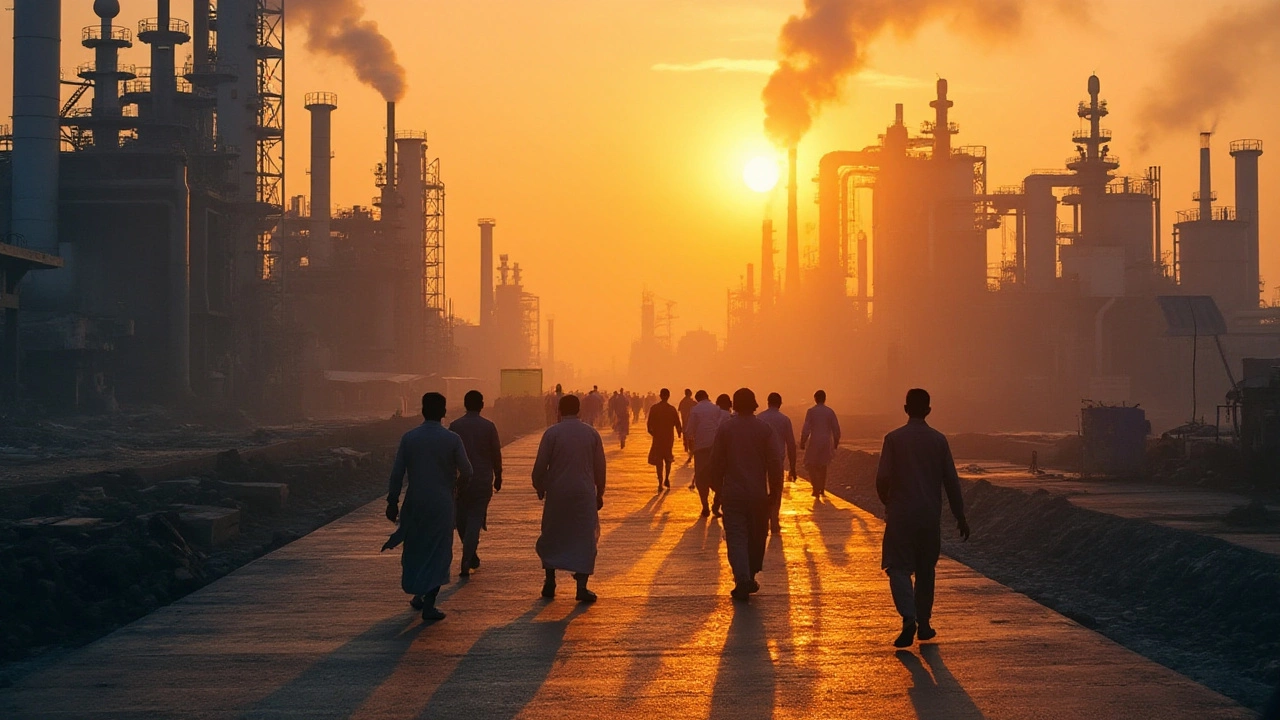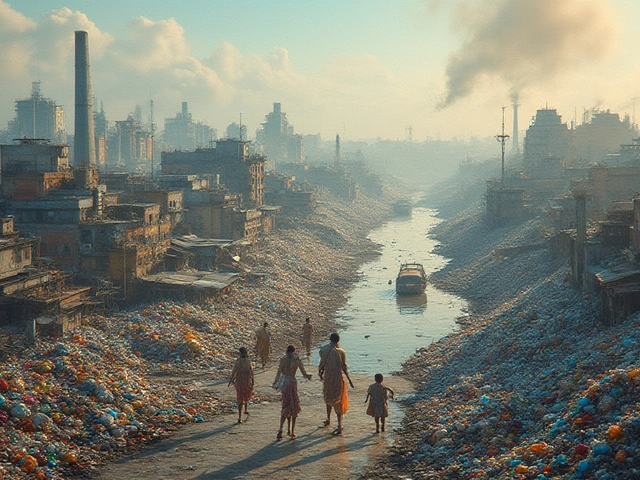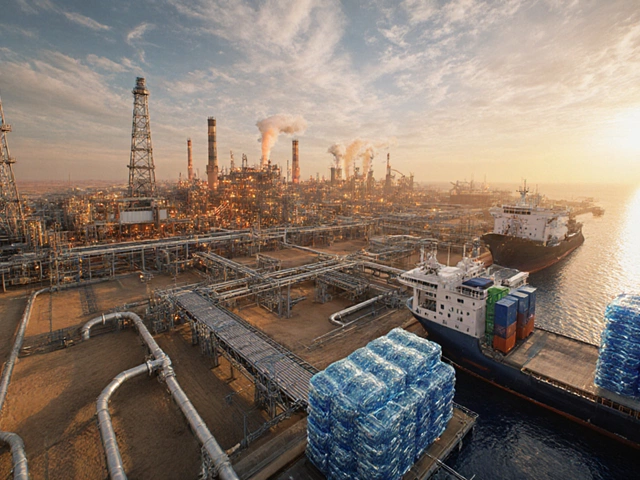The landscape of the Indian chemical industry is as vibrant and diverse as the country itself. With advancements in a myriad of sectors such as agriculture, construction, and textiles, chemicals have become an essential backbone supporting this growth. Amidst this dynamic environment, certain chemical products stand out due to their surging demand.
This rising demand has been driven by factors such as an increasing population, industrial activities, and innovations in consumer goods. As new market trends unfold, the need for chemicals has diversified into different streams, making it a lucrative market for chemical manufacturers. Here, we delve into those product categories that are reshaping the chemical landscape in India, identifying opportunities and challenges that lie ahead.
- Introduction to the Indian Chemical Industry
- Demand for Agrochemicals
- Emerging Need for Specialty Chemicals
- Growth in Petrochemical Sector
- Future Trends in the Indian Chemical Market
Introduction to the Indian Chemical Industry
The Indian chemical industry occupies a pivotal position in the global landscape, being one of the largest producers and consumers of chemicals worldwide. Its influence extends across many aspects of daily life, from agriculture to technology and pharmaceuticals. As one of the nation's major industrial sectors, it contributes significantly to India's economic growth, exporting to diverse markets across Asia, Europe, and America.
The roots of this industry stretch back over decades, transitioning from a primarily import-dependent segment to an emerging manufacturing hub. This transformation can be attributed to strategic policy initiatives undertaken by the government aimed at encouraging domestic production and innovation. The modernization of infrastructure and enhanced research capabilities have spurred substantial growth, thus positioning India as a force in the global chemical market.
A diverse range of products is encompassed within the industry, including petrochemicals, agrochemicals, specialty chemicals, and pharmaceuticals. Each of these sectors has its role and significance in uplifting the economy while catering to both national and international demands. A driving factor behind the industry's robustness is its innate ability to blend traditional methods with cutting-edge technology, ensuring sustained growth and adaptation.
In terms of market dynamics, the chemical industry's demand is influenced by various factors such as population growth, urbanization, and the burgeoning middle class, all of which create a consistent need for enhanced productivity and advanced products. Increasing foreign investments, combined with the 'Make in India' initiative, have further catalyzed growth opportunities, encouraging multinational giants to establish manufacturing bases within the country.
"The Indian chemical industry is expected to reach $300 billion by 2025, driven by demand from diverse sectors such as agriculture and consumer goods," said Dr. Anil Mistry, a respected analyst at Chemical World Reviews.
Such projections are reflective of the favorable business environment and resource availability in India. The industry's compelling journey from a labor-intensive past to a technologically driven present paints a promising future. The focus on sustainable practices and reduction of environmental impact has also become pivotal, with numerous companies enhancing their green chemistry efforts.
An interesting aspect developing within this sector is the collaboration between academia and industry, fostering innovation and entrepreneurship. These partnerships aim to tackle global challenges, boost productivity, and drive economic efficiencies in the various chemical sub-sectors.
Demand for Agrochemicals
India, with its vast stretches of fertile land and a predominantly agrarian economy, has an insatiable appetite for agrochemicals. The need to enhance crop yields sustainably and combat agricultural pests has catapulted the agrochemical market into the spotlight. Reflecting India's commitment to ensuring food security for its large population, the demand for fertilizers, herbicides, insecticides, and fungicides is on a constant rise. The favorable government policies promoting agricultural growth and subsidies on fertilizers have only strengthened this demand. India's farmer-friendly initiatives aim to double farmer income, and the strategic role of agrochemicals in achieving this cannot be overstated. The simplicity yet crucial nature of agrochemicals is pivotal, directly influencing crop productivity and ultimately, the economy.
According to a report by the FICCI, the Indian agrochemical industry was valued at USD 5 billion in 2020 and is expected to grow at a CAGR of 8% during 2020-2025. This burgeoning market reflects not only domestic demand but also the global reliance on Indian agrochemical exports. The development of hybrid seeds and genetically enhanced crops has expanded the use of advanced agrochemicals designed to support specific growing conditions, making these products indispensable to modern farming. As the world leans towards sustainable farming practices, the need for environmentally friendly agrochemicals that minimize soil and water pollution is becoming more prominent.
"The Indian agrochemical market is not just about meeting domestic demands but establishing a stronger footprint in the global arena," observed a leading market analyst, emphasizing the sector's expansive potential.
Substantial investments in research and development have earmarked India's agrochemical industry as a breeding ground for innovation. Companies strive to develop bio-based products that balance efficacy with environmental stewardship. The growing concern over the negative impacts of traditional chemical pesticides has spurred interest in biological substitutes. These bio-pesticides, as well as organic fertilizers, are increasingly taking center stage, responding to the call for greener alternatives. As a major player in the global supply chain for agrochemicals, India exports to key markets worldwide, including the US, Japan, and Brazil. This global reach is a testament to the efficient manufacturing processes, strategic price points, and adherence to international quality standards by Indian manufacturers.
Yet, challenges remain. Regulatory compliance and the need to educate farmers about the safe handling and the judicious use of these chemicals are ongoing issues. Strategies that elevate farmer awareness about product applications can drastically improve safety and efficiency. Public and private partnerships work tirelessly to implement these educational programs, bridging the gap between technology and end-users. Emerging technologies, smart farming practices, and precision agriculture open new avenues for the usage of agrochemicals, promising improved productivity and reduced waste. The integration of agrochemicals into these advanced practices is sure to push the demand even higher, making India a beacon of agricultural transformation through enhanced chemical applications.

Emerging Need for Specialty Chemicals
In the current industrial climate, specialty chemicals are gaining unprecedented attention in India. These chemicals are formulated for specific purposes, delivering unique properties and performance benefits across numerous industries. What makes them stand out is their tailored applications. They’re crafted to serve specific needs rather than being produced in bulk for generic uses. This niche formulation gives them an edge, propelling their demand in sectors like agriculture, automotive, and healthcare.
The Indian automobile industry, for example, has leveraged specialty chemicals to enhance vehicle performance, durability, and emissions management. Innovations in lubricants, coolants, and fuel additives are some significant contributions of specialty chemicals in this domain. As the automotive sector tilts towards sustainable and efficient technologies, the need for these specialized formulations is only expected to surge. In agriculture, specialty chemicals play a crucial role in enhancing crop yield and protection. Products like biopesticides, herbicides, and plant growth regulators ensure that India’s vast agricultural landscapes are efficiently managed and productive.
According to a report by Grand View Research, "The global specialty chemicals market size was valued at USD 436.08 billion in 2019, and it is expected to expand at a CAGR of 5.1% from 2020 to 2027." Such growth trends indicate a bright future for specialty chemicals, especially in emerging markets like India.
The healthcare industry also sees the importance of specialty chemicals, especially in the production of pharmaceuticals. As health awareness grows, driven by an expanding middle-class and improved healthcare access, the demand for innovative drug formulations has risen. Specialty chemicals are indispensable in this domain, facilitating the creation of more effective, targeted therapies and diagnostic tools. This has paved the way for research and collaboration between chemical manufacturers and pharmaceutical companies. Whether in enhancing drug delivery systems or crafting new treatment formulations, specialty chemicals are key players.
A remarkable trend underscoring this demand is the steady investment by chemical corporations into research and development. Developing novel product lines that align with global sustainability goals is a priority. These innovations help minimize environmental impact while maximizing efficiency and effectiveness. As industries worldwide emphasize eco-friendly and sustainable practices, specialty chemicals often lead the way in achieving these goals. In India, government initiatives aimed at promoting research and innovation in the chemical sector further bolster the rise of specialty chemicals.
To sum up, the speciality chemicals industry in India presents an attractive avenue for growth and innovation. The sector’s potential is evident, not just in sheer demand but in the transformative impact these chemicals have on diverse industries. As Indian markets continue to evolve, embracing new technologies and stricter regulations, the future of specialty chemicals seems both promising and exciting. The ongoing synergy between industry leaders and regulatory bodies ensures that specialty chemicals continue to meet the shifting requirements of our modern world.
Growth in Petrochemical Sector
The petrochemical sector in India has carved a significant niche, representing both a cornerstone of industrial advancement and a catalyst for economic growth. As one of the world’s largest producers of petrochemicals, India stands tall due to its robust refining capacity and substantial investments in infrastructure. The country's strategic geographic position, coupled with a rising domestic demand, makes it a prime player in the global petrochemical scene. The sector's growth can be attributed to various factors, including increased urbanization, the thriving automobile industry, and the development of infrastructure projects. With these dynamics at play, the petrochemical industry is projected to seamlessly integrate with the future growth trajectories of the economy.
Petrochemical products form the bedrock of many everyday items, from plastics to synthetic textiles, which can influence consumer lifestyles significantly. This versatility ensures that the demand for petrochemicals continues to climb. A vital aspect of this growth is the government’s focus on the 'Make in India' initiative, which emphasizes boosting local manufacturing and reducing reliance on imports. As a result, hefty investments have been channeled into the creation of new production facilities and the upgrade of existing ones. Multinational corporations, eyeing India's potential, have not been far behind in contributing to this endeavor, leading to valuable technology transfers and enhancement of local expertise.
Encouragingly, the Indian government's proactive role does not stop at just infrastructure. Policies promoting ease of doing business, along with incentives for innovation, have fostered a conducive environment for petrochemical giants. Many players in the sector have embraced sustainable practices, integrating eco-friendly technologies to mitigate environmental impacts while improving production efficiency. This sustainable approach is increasingly appealing to environmentally conscious consumers and stakeholders, establishing a balanced growth pattern.
Interestingly, as per a study by the Indian Petrochemical Manufacturers Association, the sector is expected to witness a compound annual growth rate of over 10% in the coming years, a promising statistic that underscores the immense potential yet to be tapped.
A spokesperson from the association stated, "India's petrochemical industry is not just growing; it's evolving to meet the challenges of the modern age."Such insights highlight the confidence within the industry, mirroring broader economic aspirations.
Ultimately, the impactful role of petrochemicals in transforming the industrial climate continues to expand. Looking to the future, the sector is poised to explore renewable resources as raw materials, a move expected to revolutionize production paradigms. By embracing both technological advancements and sustainable methodologies, India’s petrochemical sector is set to spearhead a new era of chemical manufacturing.

Future Trends in the Indian Chemical Market
India's chemical industry stands on the brink of transformation, driven by rapid industrialization and a surge in domestic demand. One of the noteworthy future trends is the shift towards green and sustainable chemistry. With growing environmental concerns, manufacturers are increasingly focusing on eco-friendly processes and products. This shift is not only a response to consumer demand but also aligns with global efforts to reduce carbon footprints. The Indian government, recognizing this trend, has been implementing policies to encourage sustainability and reduce reliance on fossil fuels.
Another significant driver is the rise of digitalization in chemical manufacturing. Industry 4.0 technologies, including IoT and AI, are poised to revolutionize production processes, making them more efficient and resilient. Companies are investing in smart manufacturing techniques to optimize supply chains and improve product quality. This technological integration represents a paradigm shift in how chemical businesses operate, fostering a more proactive approach to managing resources and reducing waste.
The Confederation of Indian Industry (CII) states, "The digital transformation in the Indian chemical market is expected to enhance productivity by 15% to 20% in the next five years."
The demand for specialty chemicals is another area showing dynamic potential. As the Indian middle class expands, so does the demand for consumer products that rely heavily on specialty chemicals. This includes everything from personal care items to high-performance materials in electronics. Indian manufacturers are thus innovating to develop high-value, customized chemical solutions that cater to these growing segments.
Moreover, the agrochemical sector continues to demonstrate robust growth. With India's large agricultural base, the demand for fertilizers and pesticides that support higher yields remains strong. However, a subtle shift towards organic farming has sparked interest in bio-based agrochemicals. This trend presents both opportunities and challenges, as producers aim to balance efficacy and environmental impact.
Lastly, the geopolitical climate is playing a crucial role in shaping the future of the chemical industry. Global trade tensions and supply chain disruptions have prompted India to look inward and bolster its production capabilities. This has opened doors for local manufacturers to tap into Make in India initiatives aimed at boosting indigenous production capacities across various sectors, including the Indian chemical market.











Write a comment